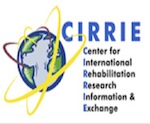Abstract
Aging that is experienced in six areas which are chronological, biological, social, economic, physiological, psychological and societal is a physiological process that includes all irreversible, structural and functional changes on cells, tissues, organs and systems in the organism over time. Aging process is the process in which all the organisms go through changes from birth to death and varies depending on individuals. Agedness is the last phase of the aging process. Although agedness, which is defined as “decrease of the ability to adapt to environmental factors” by the World Health Organization (WHO), is deemed as the end of 64 and the beginning of 65 years, a new classification was made by the WHO in August 2017 stating that agedness signifies 80-99 years.
Keywords
Sleepiness, Psychiatry, Aromatherapy
Introduction
According to the Turkish Statistical Institute (TUIK) 2017 statistics, 8.9% of the world population consists of aged people. TUIK states that the aged population was 5,891,694 people in 2013, increasing 17% within five years to 6,895,385 people in 2017. While its rate was 7.7% in the total population in 2013, it raised to 8.5% in 2017 [1]. With the increasing age, changes occur in the skin, senses, body, cardiovascular system, respiratory system, musculoskeletal system, neurological system, gastrointestinal system, urinary system, immune system and metabolic and endocrine systems [2-7]. Besides these changes, the change in sleep function occurring in older people is another one.
Fadıloğlu et al. conducted a study on the sleep quality of people aged 60 years and over living in nursing homes and found that 77% had a bad sleep quality. Güler et al. found that 43.5% of aged people had sleep disorder; there were limited studies on sleep quality at that time; and they suggested giving priority to the problems related to the sleep of aged people [8]. Cankurtaran et al. found that sleep disorders in the elderly were around 35%-52% [9]. Ergün et al. reported that the rate of difficulty falling asleep in Turkey’s nursing homes was around 35%-54% [10].
In the literature, sleep is defined as the state of unconsciousness from which the individual can be awakened by stimuli such as sound and light [11,12]. According to Maslow’s hierarchy of needs, sleep is important and getting enough sleep is the most basic need of people. Sleeping is state of stillness serving for all organism to be at rest and a regeneration phase that prepares again all the organism for life. It is a repetitive, simply reversible condition with different stages, starting and progressing times to these phases, along with variations in breathing, heart beating, muscular tonus, body temperature, hormone secretion and blood pressure [13-15].
The state of sleepiness and wakefulness is regulated in the brain by the Reticular Activating System (RAS) and Bulbar Synchronizing Region (BSR). While brain centers are occasionally inhibited and activated, inhibition ensures falling asleep and activation ensures wakefulness. Another factor ensuring falling asleep is inhibition of RAS. A one-day sleep-wakefulness circle is named circadian rhythm and makes a part of the biological clock that causes an individual to fall asleep at a certain time and to awake at another time [16].
The period between closing the eyes to sleep and going to full sleep is called latent period and the sleep after this latent period consists of two main stages that are Rapid Eye Movement (REM) according to physiological criteria, and Non-Rapid Eye Movement (NREM). NREM sleep is a sleep stage when psychological and physical activities slow down, seem at the first hours of sleep, deep and relaxing, consisting of four stages (Stage I, Stage II, Stage III, Stage IV) and deepens gradually from stage I to stage IV. However, REM starts after NREM stage, is the deepest sleep, with visible eye movements, experienced around 90 minutes from the beginning of sleep, and is generally more difficult stage to wake up compared to others [17]. The related literature shows that REM sleep is an important stage from cardio logical, psychological, neurological and respiratory aspects [18].
Sleep quality is defined as sleep quality of feeling fit and ready for a new day after waking up, and this sleep quality is affected by many factors such as lifestyle, environmental factors, work, social life, economic status, gender, emotional status, general health status, medications used, diet, the length of time passed to fall asleep, the number of awakenings from sleep, the duration of sleep and stress [19]. If an individual feels mentally ready for the day and rested, this means that he/she has had a normal and quality sleep.
Polypharmacy, one of the factors affecting sleep quality in older people, is very common among them due to coexistence of more than one chronic disease and increases the rate of sleep problems in older people significantly [20,21]. This is because half-life of medications prolongs and the amount of drug in circulation increases due to the changes in the body system along with aging. Side effects of drugs can cause a decrease in slow wave and REM sleep, deteriorate sleep architecture and pattern, because sleep-related respiratory disorders, worsen sleep-related movement disorders, and increase daytime sleepiness [22]. Wichniak et al. found that tricyclic antidepressants such as protriptyline, desipramine, selective serotonin reuptake inhibitors (fluoxetine, paroxetine) and serotonin-norepinephrine reuptake inhibitors (venlafaxine) cause insomnia around 30%-40%.
Another factor affecting the sleep quality is age. A set of changes occur in the sleep-wakefulness cycle (circadian rhythm), and NREM and REM with increasing age. These changes include an increase in the 1st and 2nd stages of NREM sleep, decrease in the 3rd and 4th stages of NREM and REM sleep, total sleep time and sleep quality, an increase in the number of awakenings from sleep, and a disruption in the daily sleep-wakefulness cycle.
According to Ohayon, epidemiological data show that sleep complaints and sleep disorders increase with age, while sleep and quality of life decrease [23]. A study by Foley et al. conducted with people aged 50 years and over in the United States showed that 68% of the participants had sleep problems, while the study conducted by Zee et al. reported that 28% of the elderly individuals had difficulty in initiating and maintaining sleep. The study Önal et al. reported that 4.7% of the elderly could not resist sleeping during the daytime, had a sudden and short-term sleep mode, 1.3% complained that their respiration stopped shortly after sleeping, 4.2% woke up with frequent nightmares, 2.5% felt restless as they involuntarily stretched their legs while asleep, 3.8% complained of having disturbed sleep patterns during the day and night, and 2.5% of them complained of sleeping too much during the day [24].
The study by Cankurtaran et al. found that older people wake up three times during the night. According to Kryger, psychosocial, behavioral and environmental factors deteriorate sleep quality in the elderly, and therefore not only the quality of life is affected but also morbidity and mortality, particularly memory disorders increase [25]. A study examining the sleep pattern characteristics of older people living in nursing homes with no cognitive impairment found a statistically significant difference between sleep quality and gender, perception of physical health, perception of mental health, using drugs for physical complaints and staying in a nursing home voluntarily, and that these factors affected sleep patterns [26]. The study of Buğrul discussing the sleep quality of individuals aged over 55 years and who lived in Beylikova found that 20.2% of the elderly fell asleep during the day [27]. A study conducted in Çanakkale found that 56.0% of the elderly wanted to have a nap after waking up [28]. The most common sleep disorders in the elderly is insomnia, sleep breathing disorders, REM sleep behavior disorder (parasomnia) and restless legs syndrome/periodic movement disorder in [29].
Due to poly pharmacy and its side effects, non-pharmacological treatments (aromatherapy, massage, music therapy, relaxation exercises, behavioral therapies, etc.) have come into prominence in the treatment of sleep disorders recently [30-33]. Selection of an effective intervention to ensure sleep is important in solution of the problem. The study of Yücel et al. identified that the use of hypnotic and sedative drugs in the treatment of insomnia is common, addictive, and do not ensure an effective and desired sleep [34]. Also, other studies found that hypnotic drugs used in sleep therapy should be used carefully since their discontinuation after a long-term use causes severe insomnia [35-39].
The study of Montgomerya and Dennis pointed that complementary treatments used to find solutions for sleep disorders of the elderly were effective in increasing the total sleep time, decreasing the time it took to fall asleep, and reducing the complaints of waking up at night and early in the morning [40]. Similarly, Morin et al. found that non-pharmacological treatment administered to individuals with sleep problems led to decreased sleep latency and number of awakenings after sleep, and an increase of 30 minutes on average in the total sleep time [41]. The study conducted by Sung et al. determined that non-pharmacological methods increased the sleep quality and reduced the time to fall asleep; also, there were differences in the 2nd and 3rd stages of sleep between the control and experimental groups [42].
All methods used along with the modern medicine to help individuals gain and keep their health are called complementary treatments [43]. Complementary treatments have been extensively used after the 1990s and have emerged as an important force that guides health care in the United States [44]. The literature shows that the frequency of use of complementary treatment methods is 42.1% in the USA, 48.2% in Australia, 49.3% in France, 70.4% in Canada among developed countries; 71% in Chile, 70% in China, 40% in Colombia among developing countries; 80% in African countries; and 61.6% in Turkey as indicated in the study of Altın et al. [45].
Traditional and complementary medical applications have taken place as applications that amplify care in nursing practices [46-49]. As also stated by Cole et al., Trevelyan and Booth divided the complementary treatment used by nurses into three groups. The first group comprises the treatments that nurses can directly include in practices (massage, shiatsu, reflexology, aromatherapy, therapeutic touch), the second group comprises the treatments that can be included in nursing partially (homeopathy, herbal treatments, nutritional therapies), and the third group comprises the nurses’ suggestions that cannot be easily included in nursing practices (hypnotherapy, acupuncture, chiropractic, osteopathy) [50]. The study of Jackson determined that most nurses who used a complementary treatment used those in the first group, which are massage (68%), aromatherapy (59%), reflexology (18%) and therapeutic touch (13%) [51]. Another study reported that intensive care nurses used mostly music therapy, aromatherapy, massage, exercise, relaxation techniques, touching and directing to prayer as complementary treatments [52].
Complementary treatment has many benefits such as establishing a positive relationship between the patient and nurse and increasing its effect, providing a holistic approach, preventing diseases, increasing self-care, strengthening the individual, providing individualized health care and treatment, reducing the side effects of medical and surgical treatments, reducing emotional concerns, promoting the quality of life, general well-being and satisfaction with care. Aromatherapy, defined as the use of essential oils, is a commonly used complementary application by the nurses to maintain and promote health and vitality [53]. The concept of aromatherapy has been accepted as an important nursing intervention included in NIC (Nursing Interventions Classification) [54]. Johnson et al. stated that aromatherapy could be used as a holistic nursing intervention in taste and smell problems, reducing pain and anxiety, ensuring comfort, and coping with stress [55].
The oils used in aromatherapy cure reduce symptoms such as stress, anxiety, sleep problems, depression, irritability, fear, anger, loneliness, panic attack, fatigue, burnout, insecurity while improving cognitive and emotional states such as memory, concentration, happiness and peace [56].
Aromatherapy should be administered correctly to benefit correctly. Aromatic oils can be administered in four different ways, which are topical (massage, compress, or bath), internal (mouthwash, vaginal, or anal suppository), oral (as a drug or dilution in honey, alcohol, or any diluent), and inhalation (directly or indirectly, with or without steam) [57]. Aromatherapy is administered topically, that is, aromatic massage most and inhalation [58].
Aromatic massage is defined as soft tissue manipulation, using basic, that is carrier oils (olive oil, sesame, almond, nut, centaury oil, etc.) and essential, that is volatile oils (rose, thyme, sage, cumin, anise, laurel, rosemary, lavender oils, etc.). Based on the characteristics of the used oil, it can be either soothing or stimulating [59]. Some studies have underlined that lavender oil and its main compounds linalool and linalyl acetate, particularly together with massage, have a hypnoaction and somnific effect in animals and humans depending on the dose, and improve sleep quality in individuals with sleep disorders [60-62].
The traditional and complementary medicine regulation was published in the Official Gazette, dated 27.10.2014 and numbered 29158, with a decision to establish a scientific commission on traditional and complementary medicine applications along with this regulation. Although nurses have been actively using some complementary therapies from the past to present, these were not included in the commission. Though phytotherapy was included in the regulation, aromatherapy was not. In this case, aromatherapy that has been used in various nursing studies since the establishment of nursing, can also be used without the presence of a certified physician and its administration has positive contributions to the care provided by nurses.
Most studies in the literature have investigated the effects of aromatherapy use and used inhalation method most. This study expects that the use of aromatherapy massage can increase sleep quality and reduce sleepiness and encourage nurses to use this method.
Research Aim
The study was conducted to determine the effect of aromatherapy massage, on sleep quality of older people living in a nursing home to treat their sleep problems.
Application of the Nursing Care
Deprivation and be informed about the stages of sleep
Nursing interventions for individuals with sleep problems: Since sleep is one of the basic needs, nurses, due to their individual and reformative-curative benefits and knowledge about normal sleep and problematic sleep of individuals by their age, they should plan and apply nursing interventions to resolve sleep problems [63]. “Discomfort in sleep patterns”, defined as a condition that causes discomfort in the quality and amount of resting function or affects the lifestyle, is an important nursing diagnosis that also affects the quality of life and determined by NANDA [64,65].
Nursing process and sleep
The first step into nursing interventions for sleep problems is data collection. The collected data for determining the factors causing deterioration of sleep pattern should be reviewed and based on the data obtained, nursing diagnosis be made [64].
Planning the nursing care
The main objective in planning care of the patients with sleep disorder is to determine the affecting factors and take the necessary measures [64]. The objective of the care plan is to identify the factors that disrupt or increase sleep, to ensure a healthy sleep pattern, relaxation after waking up and storing energy, making individuals is aware of self-care to eliminate the factors that disrupt sleep, experience less symptoms of sleep Nursing practices should be arranged in a way to regulate sleep quality and resting process to improve health and nurses should be able to apply personal principles that increase patients’ normal sleep pattern even if there are many factors causing sleep problems.
These principles are:
•Establishing Therapeutic Relationship
•Relieving Physical Disorders
•Ensuring Relaxing Environment
•Ensuring Rest and Sleep Integrity
•Ensuring Bedtime Habits
•Ensuring Comfort and Relaxation
•Implementing Pharmacological Treatment
•Interventions
•Ensuring Family Support
•Patient’s Education [16,64].
Evaluation of Sleep
In the evaluation of all sleep problems, nurses should state that the patients have rested, fallen asleep within 20-30 minutes, waken up less frequently, their sleep needs have been met, restlessness, unhappiness, stress and anxiety have decreased and use the criteria such as patients’ relaxation when they wake up and the ability to make decisions and having a good memory after waking up [66].
Materials and Methods
Research type
This is a semi-experimental study applying pre- and post-test to determine the effect of aromatherapy massage administered to older people who have sleep problems in a nursing home on their sleep quality and sleepiness. Its dependent variables are sleep quality and sleepiness of older people, and independent variable is aromatherapy massage.
Research setting and time period
The study was conducted with 62 older people living in nursing home in Istanbul, Turkey. The nursing home had a capacity of 70 beds and three floors that are divided into two parts for those who can meet their own needs and those who cannot. The first floor is for 29 people who cannot meet their own needs “Private Care Floor”, the second and third floors host 41 people who can meet their own needs. The study was conducted between May 21 and June 21, 2018.
Population and sample
Power analysis was made using G*Power (v3.1.9) software to determine the sample number. At the beginning of the research, a pilot study was conducted in both groups with seven participants from each group. According to the evaluation made using the Pittsburgh Sleep Quality Index (PSQI) values post-intervention compared to pre-intervention, the effect size was calculated as W=0.985, concluding that a total of 11 people were required to achieve 80% power at the α=0.05 level.
The study was carried out with 15 people considering the potential drop-outs. Although the sample was determined to be 17 older people who met the criteria, it continued with 15 people since two did not want to participate.
Sampling Criteria
Inclusion criteria: Those who had at least a total of 5 points from the PSQI, those who had 10 points and more from the Epworth Sleepiness Scale (ESS) and those who had no allergy against anything (from the patients’ files and their verbal expressions) were included.
Exclusion criteria: Those who used medication for sleep disorders and those who had cognitive problems as indicated in their files and diagnosed by the physicians were not included.
Data collection tools
The data were collected using personal information form for the elderly created by the researchers, the PSQI and the ESS.
Administration
A total of 17 older people who lived in a nursing home in Istanbul and met the inclusion and exclusion criteria were determined for the study which lasted for four weeks. However, this number dropped to 15 as two patients did not want to take part. For two weeks, the patients were administered back massage with a mixture of lavender and almond oil for 20 minutes, three times a week, and for a total of six sessions, using effleurage and petrissage methods. At the end of those two weeks, the scales used prior to the intervention were reapplied to determine the effect of aromatherapy massage on sleep quality and sleepiness of the elderly.
A 53-hour applied training was received from trainers in eight different branches from “Homemade Aromatherapy” to determine the selection, administration, method and quantity of the oils used in the mixture. For administration of aromatherapy massage, all steps were paid attention such as setting of massage, preparation of equipment, practitioner and individuals.
Data Analysis
The statistical data were analyzed using SPSS software. Categorical measurements were given as number and percentage, and continuous measurements were given as mean and standard deviation (where necessary, median and minimum-maximum). The student t-test was used for the total scale score comparison. The dependent group t-test was used for dependent group comparison pre- and post-intervention.
Ethical Consideration
A written permission was obtained from the Uskudar Universitiy ethics committee at 25 Aprıl 2018 with the number of 2018/575 and nursing home permission with the number of 92 at April17, 2018 to conduct the study. The participants were informed about the aim of the study and provided their written and verbal consent for participation.
Findings
Distribution of individual characteristics
Table 1. Distribution of individual characteristics (N=15).
| Variables |
|
N=15 |
| Gender |
Male |
7 |
| Female |
8 |
| Age (Mean ± SD) |
79.8 ± 8.2 |
|
| Length of stay in nursing home (Mean + Sd) |
2.96 ± 2.77 |
|
| Chronic diseases |
Yes |
10 |
| No |
5 |
|
| Number of medicines used |
No |
1 |
| 1 to 4 |
3 |
| 5 to 7 |
7 |
| 8 and more |
4 |
| Smoking habits |
Yes |
4 |
| No |
11 |
Table 1 show that 8 out of 15 older people were female, their mean age was 78.8 years, and they had been living in a nursing home for an average of 2.96 years. Considering chronic diseases, five did not have any. Seven of the patients used 5 to 7 drugs and one did not use any drug. All the patients stayed in private rooms. Of them, 11 did not smoke and none of them had any allergy (Table 1).
Comparative findings pre- and post-administration of aromatherapy massage
Table 2: Distribution of PSQI score pre- and post-administration of aromatherapy massage (N=15).
| Scale |
N |
Before the application |
After the application |
p* |
| Subjective sleep quality |
15 |
1.86 ± 0.83 |
0.0 ± 0.0 |
1 |
| Sleep latency |
15 |
3.80 ± 1.01 |
1.26 ± 0.70 |
0.001 |
| Duration of sleep |
15 |
2.26 ± 0.70 |
0.46 ± 0.51 |
0.015 |
| Routine sleep activity |
15 |
2.26 ± 1.09 |
0.93 ± 0.79 |
0.02 |
| Sleep disorder |
15 |
1.93 ± 0.70 |
1.00 ± 0.0 |
1 |
| Use of opiate |
15 |
1.86 ± 0.83 |
0.40 ± 0.50 |
0.075 |
| Daytime function disorder |
15 |
1.93 ± 1.03 |
0.86 ± 0.91 |
0.291 |
| PSQI Mean Scale Total |
15 |
15.93 ± 4.11 |
4.93 ± 2.05 |
0.001 |
The findings from the comparison of older people’s PSQI pre- and post-aromatherapy massage are given in Table 2.
There were no significant differences in the subjective sleep quality (p=1.000), sleep disorder (p=1.000), the use of opiate (p=0.075) and daytime dysfunction (p=0.291) subscales of PSQI were statistically significant pre- and post-aromatherapy massage (p>0.05). The mean values of sleep latency, duration of sleep and routine sleep activity before aromatherapy massage were higher than the mean values from the scale after the massage and there were significant differences between them (p<0.05) (Table 2). The PSQI value was lower (15.93+4.11) pre-administration of aromatherapy massage than post-administration (4.93+2.05) and there were significant differences between them (p=0.001, p<0.05) (Table 2). The effect size was found to be 3.094, confidence was 95%, and power was 100% at α=0.05.
Table 3: Distribution of ESS score pre- and post-administration of aromatherapy massage (N=15).
| Scale |
N |
Before the application |
After the application |
p* |
| ESS |
15 |
12.13±2.44 |
2.06±1.70 |
0.001 |
Table 3 shows the findings from the comparisons of ESS administered to the elderly pre- and post-administration of aromatherapy massage. According to the table, the ESS value (12.13+2.44) pre-administration of aromatherapy massage was found to be lower (2.06+1.70) than the post-administration value and there were significant differences between them (p=0.001, p<0.05). The effect size was found to be 4.647, confidence was 95%, and power was 100% at α=0.05.
Discussion
Discussion of findings from the PSQI pre- and post-administration of aromatherapy massage
The mean values of sleep latency, duration of sleep and routine sleep activity before aromatherapy massage were higher than the mean values from the scale after the massage and there were significant differences between them (p<0.05) (Table 2). The study of Zee et al. however, reported that of the elderly, 28% had difficulty initiating sleep and 42% had difficulty maintaining it. The study Önal et al. stated that 4.7% of the elderly could not resist sleeping during the daytime, had a sudden and short-term sleep mode, 1.3% complained that their respiration stopped shortly after sleeping, 4.2% woke up with frequent nightmares, 2.5% felt restless as they involuntarily stretched their legs while asleep, 3.8% complained of having disturbed sleep patterns during the day and night, and 2.5% of them complained of sleeping too much during the day. The study by Cankurtaran et al. found that older people wake up three times during the night. The literature supports these results.
All the elderly included in the study had poor sleep quality since their mean PSQI score pre-administration of aromatherapy massage was 15.93 ± 4.11 and the mean total scale score was greater than five (Table 2). Of the elderly aged 75 and over, 53.1% had a bad sleep quality in the study of Öztürk [66], while 77% (total PSQI mean score= 8.02 ± 2.87) of the elderly living in nursing homes in the study of Fadıloğlu et al. had a bad sleep quality. On the other hand, Eser et al. reported that 60.9% of the elderly living in nursing homes had a bad sleep quality [67]. The study of Biyik et al. identified that 43.5% of the elderly had sleep disorders that could stem from the presence of chronic diseases and communal life in nursing homes [68]. The results of the study are supported by the literature.
The fact that older people have to leave their circle and adapt to a new environment, the psychological factors (their families not coming to visit them when expected, depression, fear, stress, etc.), the drugs they use and their number, existing diseases and environmental factors (bed size, bed comfort, the noise, light, air change in the room, etc.) decrease the sleep quality. In the measurements made post-aromatherapy massage, the mean score was lower (6.66 ± 3.13) and there were significant differences between the PSQI mean scores pre- and post-administration of aromatherapy massage (p=0.001, p<0.05) (Table 2). The study of Montgomerya et al. pointed that non pharmacological methods used to find solutions for sleep disorders of the elderly were effective in increasing the total sleep time, decreasing the time it took to fall asleep, and reducing the complaints of waking up at night and early in the morning. Similarly, Morin et al. found that non-pharmacological treatment administered to individuals with sleep problems led to decreased sleep latency and number of awakenings after sleep, and an increase of 30 minutes on average in the total sleep time.
The study conducted by Sung et al. determined that non-pharmacological methods increased the sleep quality and reduced the time to fall asleep; also, there were differences in the 2nd and 3rd stages of sleep between the control and experimental groups. Smallwood et al. conducted a study with patients with demantia found that aromatherapy administered with massage particularly had a positive effect on patients with demantia and reduced sleep disorders [69]. Khoshno et al. examined the effect of effleurage massage duration on increased older people’s sleep quality and found that massage had a positive effect on sleep quality, whereas the duration of massage did not have any effect [70]. Nair et al. studied the effect of therapeutic back massage on the older people’s sleep quality, resulting that therapeutic back massage increased sleep quality of the elderly [71].
Goel et al. defined aromatherapy as “an anecdotal method to change sleep and mood” and reported that inhaled lavender increased the rate of deep or slow wave sleep (SWS) in sleep laboratories on 31 men and 31 women. Muz et al. examined the effect of aromatherapy administered by inhalation to individuals receiving hemodialysis treatment and found that lavender and sweet orange oil administered to patients increased their sleep quality, decreased the severity of fatigue, and all subscales and total scores of the PSQI between the control and experiment groups decreased significantly [72]. Lewith studied the effects of lavender on 10 voluntary participants with sleep disorders and found a decrease of 2.5 points in the PSQI of the lavender. Lee et al. found that lavender increased the sleep quality, reporting that 60% of them were satisfied with their sleep. Our study results show similarities with the literature, reporting that aromatherapy massage was effective, increased sleep quality of older people, and their PSQI levels decreased compared to pre-administration of aromatherapy massage.
Discussion of Findings from the ESS
Excessive daytime sleepiness, being a very common condition, proceeds from insufficient sleep, irregular sleep and other chronic diseases, and it is a difficulty experienced while maintaining wakefulness [73]. Buğrul examined sleep quality of individuals aged over 55 years in Beylikova and found that 20.2% of the elderly fell asleep during the day. The study of Önal et al. determined that the elderly could not resist daytime sleep, had sudden onset short-term sleep, and 2.5% of them complained of daytime sleep. A study conducted in Çanakkale found that 56.0% of the elderly wanted to have a nap after waking up.
All the elderly included in our study had excessive daytime sleepiness since their mean ESS score pre-administration of aromatherapy massage was 12.13 ± 2.44 and the mean total scale score was greater than 10 (Table3). Kamrani et al. found that older people mostly napped in the daytime. The findings from this study show similarities with the literature [74]. The elderly in this study also had excessive sleepiness during the day. The main reason of daytime excessive sleepiness of the elderly may be that they are free most of their times, they canno do any activity or hobbies and they take their drugs that may affect their sleep during the day.
In the measurements made post-aromatherapy massage, the mean ESS score was lower (2.06+1.70) and there were significant differences between the ESS mean scores pre- and post-administration of aromatherapy massage (p=0.001, p<0.05) (Table 3). Richards determined that patients slept better at nights after back massage done for six minutes in the intensive care unit [75]. Another study, investigating the effect of back massage on sleep quality of older people found that back massage had a positive effect in promoting sleep quality. Fujii et al. reported that administration of lavender oil to patients caused no change in cognitive tests and neuropsychiatric measurement [76]. Hudson found that lavender oil improved sleep quality of eight patients out of nine, eliminated daytime sleepiness, and had a long-term effect on older people. This study has also found that aromatherapy massage administered to older people is effective, improves night’s sleep quality, reduces daytime sleepiness, and reduces the patients’ ESS levels compared to pre-administration of aromatherapy massage.
Conclusion
•This study was conducted to determine the effect of aromatherapy massage administered to older people living in a nursing home on their sleep quality and sleepiness.
•The PSQI mean score was15.893 ± 4.11 pre-administration of aromatherapy massage and 4.93 ± 2.05 post-administration, with statistically significant differences between these two (p=0.001, p<0.05).
•The ESS mean score was 12.13+2.44 pre-administration of aromatherapy massage and 2.06+1.70 post-administration, with statistically significant differences between these two (p=0.001, p<0.05).
In line with the results from the study; Aromatherapy massage, which was administered to older people, living in a nursing home, for their sleep quality and sleep patterns was found to increase their sleep quality and reduce sleepiness. To increase sleep quality and reduce sleepiness of the elderly, tolerable and relaxing non-pharmacological treatments like aromatherapy massage should be used. Further studies can be conducted as randomized controlled trials.
Conflict of Interest
The authors declare no conflict of interest for this study. This article was created from the content of the master's thesis.
Financial Disclosure
No financial support was taken from any institution or entity for this study.
Authors’ contributions
Conception: MA, MÖ, Design: MA, MÖ, Data Collection: MÖ, Conducting research: MA, MÖ, Statistical Analysis: MA, MÖ, PU, Literature review: MA, MÖ, PU, Writing; MA, MÖ, PU, Critical Review: MA, MÖ, PU.
References
- TUIK. Türkiye Istatistikler Kurumu. Nüfus Istatistikleri. 2016.
- Tiftik S, Kayis A, Inanir I. Yasli breylerde sistemsel degisiklikl hastaliklar ve hemsirenin rolü. Türk Geriatri Dergisi. 2012; 15: 96.
- Karadakovan A, Eti Aslan F. Yaslilik ve bakim: Dahili ve cerrahi hastaliklarda bakim. Nobel Kitabevi Adana. 2011; 119-141.
- Nalbant S. Yaslilikta fizyolojik degisiklikler. Nobel Medicus Online Dergi. 2008.
- Aging Changes in the Senses. “Medical Encyclopedia”, MedlinePlus: Trusted Health Information for You içinde, US National Library of Medicine, Atlanta (GA): ADAM. 2017.
- Aging Changes in the Nervous System. “Medical Encyclopedia”, MedlinePlus: Trusted Health Information for You içinde, US National Library of Medicine, Atlanta (GA): ADAM, Inc. 2017.
- Aging Changes in Skin. “Medical Encyclopedia”, Medline Plus: Trusted Health Information for You içinde, US National Library of Medicine, Atlanta (GA): ADAM, Inc. 2017.
- Güler G, Güler N, Kocatas S, Akgül N. Yaslilarin saglik bakim gereksinimleri. Cumhuriyet Tip Dergisi 2009; 31: 367-373.
- Cankurtaran M, Calik N, Cankurtaran S. Yaslilarda uyku düzeni ve uyku bozukluklari. I Ulusal Geriatri Kongre Kitabi 30 Ekim-3 Kasim 2002.
- Ergün Ö, Özdemir N, Uguz S, Ark. Adana huzurevinde yasayan yaslilar ile kendi evinde yasayan yaslilarda depresyon sikligi ve güncel yasam aktivitelerinin degerlendirilmesi, I Ulusal Geriatri Kongre Kitabi. 2002.
- Yetkin S, Özgen F. Uyku Bozukluklari Köroglu E Ve Güleç C. Psikiyatri Temel Kitabi 2 Baski Ankara: HYB Basin Yayin. Bölüm. 2007; 50: 461-473.
- Sahin L. Uyku AM. Uykunun düzenlenmesi. Saglik Bilimleri Dergisi 2013; 22(1): 93-98.
- Black J, Hawks HJ, Keene MA. Foundations of medical surgical nursing. 6th ed. England: Mosby. 2003; 431-443.
- Çakircali E. Hasta bakimi ve tedavisinde temel ilke ve uygulamalar. 3 Baski, Izmir: E.Ü Basimevi, 2000: 25-36.
- Akça F, Turan EU, Keser ÖN, Demir IR, Savran S. Temel hemsirelik kavramlar, Ilkeler, Uygulamalar. Istanbul. Istanbul Medikal Yaincilik. 2007: 410-420.
- Erdöl H, Uyku. Hemsirelik esaslari kitabi. Syf. 2011: 1100-1114.
- Potter AP, Perry AG. Fundamentals nursing. 7th Ed. Missouri: Mosby 2009
- Algin DI, Akdag G, Erdinç OO. Kaliteli uyku ve uyku bozukluklari. Osmangazi Tip Dergisi 2016; 38: 29-34.
- Senol V, Soyuer F, Peksen AR, Argün M. Adolesanlarda uyku kalitesi ve etkileyen faktörler. Kocatepe Tip Dergisi 2012; 13(2): 93-104.
- Zengin N. Yogun bakim ünitesinde yasli hastalarda uyku sorunlari ve çözüm önerileri. Yogun Bakim Hemsireligi Dergisi 2015; 19(2): 80-87.
- Vaz Fragoso CA, Gill TM. Sleep complaints in community-living older persons: a multifactorial geriatric syndrome. Journal of the American Geriatrics Society 2007; 55(11): 1853-1866.
- Yazgan P. Yaslida uyku sorunu. Türk Fiz Tip Rehab Derg 2009; 55(2): 67-68.
- Ohayon MM. Epidemiology of insomnia: What we know and what we still need to learn. Sleep Med Rev 2002; 6(2): 97-111.
- Önal AE, Seker S, Temizkan N, Kaya I, Tezoglu C, Güür Sö, et al., (2012). Yaslilikta uyku sorunlari ve ilgili faktörler: +65 aktif yaslanma projesi sonuçlari. Türk Geriatri Dergisi 2012; 15(4): 390-395.
- Kryger MH, Monjan A, Bliwise Dl, Ancoli-Israel S. Sleep, health, and aging. Bridging the gap between science and clinical practice. Geriatrics 2004; 59(1): 24-30.
- Gümüs AB, Engin E, Özgür G. Bir huzurevinde yasayan ve bilissel bozuklugu olmayan yaslilarin uyku düzeni özelliklerinin incelenmesi. Geriatri 2009; 12(3): 138-146.
- Bugrul N. Beylikova’da 55 yas üstü bireylerde uyku kalitesi, yorgunluk ve kognitif fonksiyonlarin degerlendirilmesi. Halk sagligi anabilim dali tipta uzmanlik tezi. 2015.
- Bulut S. Yaslilarda Uyku Bozukluklari ve Tedavisi. Turkiye Klinikler. Jornal of Psychiatry-Special Topics. 2016; 9(4): 33-41
- Tasar P, Sahin S. Yaslilarda uyku bozukluklari ve uyku bozukluklarinda tedavi. türkiye klinikleri. Journal Geriatr-Special Topics 2017; 3(2):104-109.
- Cipriani G, Vedovello M, Nuti A, Di Fiorino M. Aggressive behavior in patients with dementia: Correlates and management. Geriatric and Gerontology International 2012; 11(4): 408-413.
- Douglas S, James I, Ballard C. Non-pharmacological interventions in dementia. The Royal Collage of Psychiatrists. 2004; 10: 171-177.
- Lin PW, Chan WW, Ng BF, Lam LC. Efficacy of aromatherapy (Lavandulaangustifolia) as an intervention for agitated behaviors in Chinese older persons with dementia: A cross-over randomized trial. International Journal of Geriatric Psychiatry 2007; 22(5): 405-410.
- Ploeg ES, Eppingstall B, O’connor DW. The study protocol of a blinded randomized-controlled cross-over trial of lavender oil as a treatment of behavioral symptoms in dementia. BMC Geriatrics. 2010; 10: 49.
- Yücel S, Eser I, Khorsid L, Çelik S. Huzurevinde Yasayan Yaslilarda Müzigin Uyku Kalitesine Etkisi. Journal of Human Sciences 2016; 13(3): 3939-3950.
- Ceylan E, Göka E. Arastirma ve klinik uygulamalarda biyolojik psikiyatri, 2. Cilt, Tayf Ofset, Istanbul. 1998; 161-165.
- Keith JC, Pharm D. Medical drugs and their effects on sleep and wakefulness Ed: Lee-Chiorig T, Sateia MJ, Carskadon MA. Sleep Medicine Hanley and Belfus. Philewdelphia. 2002; 601-604.
- Kutsal YG, Çakmakçi M, Ünal S. Geriatri 2 Hekimler Yayin Birligi. Ankara. 1997; pp: 747.
- Örnek T, Bayraktar E, Özmen E. Geriatrik Psikiyatri 1 Baski Saray Tip Kitabevleri Izmir. 1992; 111-125.
- Öztürk MO. Ruh sagligi ve bozukluklari. 7 Baski, Hekimler Yayin Birligi, Ankara. 1997; 363-369.
- Montgomery P, Dennis J. A systematic review of non-pharmacological therapies for sleep problems in later life. Sleep Medicine Reviews 2004; 8(1): 47-62.
- Morin CM, Hauri PJ, Eapie CA, Spielman AJ, Buysse DJ, et al. Non-pharmacologic treatment of chronic insomnia. Sleep. 1999; 22(8): 1134-1156.
- Sung EJ, Tochihara Y. Effects of bathing and hot footbath on sleep in winter. Journal of Physiology Anthropology Applications and Human Science. 2000; 19(1): 21-27.
- Özer Z. Tamamlayici terapiler hakkinda. Hemsirelik Bakiminda Tamamlayici Terapiler. 2016.
- Tracy MF, Lindguist R. Nursing’s role in complementary and alternative therapy use in critical care. Critcal Care Nurse Clincal North Amercia. 2003; 15(3): 289-294.
- Altin A. Avci I. Evde alzheimer hastasina bakim verenlerin hasta bakimina yönelik kullandiklari tamamlayici ve alternatif tedavi yöntemleri. TAF Preventive Medicine Bulletin. 2016; 15(6).
- Boz I, Teskereci G. Hemsirelik bakiminda tamamlayici terapiler. Aromaterapi. 2016.
- Özdemir H, Öztunç G. Hemsirelik uygulamalarinda aromaterapi. Türkiye Klinikleri Journal of Nurse Science. 2013; 5(2): 98-104.
- Buckle J. Aromatherapy in the context of nursing, the nature of aromatherapy. Clinical Aromatherapy in Nursing London: Arnold Publisher. 1997: 2-48.
- Buckle J. Evidence-based aromatherapy in nursing practice. Clinical aromatherapy New York. Churchill Livingstone. 2003: 10-33, 116-132.
- Cole A, Shanley E. Complementary therapies as a means of developing the scope of professional nursing practice. Journal of Adverse Nursing. 1998; 27(6): 1171-1176.
- Richardson J. Integrating complementary therapies into health care education: A cautious approach. Journal of Clinical Nursing. 2001; 10(6): 793-798.
- Linquist R, Tracy MF, Savik K, Watanuki S. Regional use of complementary and alternative therapies by critical care nurses. Critical Care Nurse. 2005; 25(2): 63-75.
- Khorsid L, Yapucu D. Tamamlayici tedavilerde hemsirenin rolü. Atatürk Üniv Hemsirelik Yüksekokulu Dergisi. 2005; 8(20): 124-130.
- Bulechek GM, Butcher HK, Dochterman JM, Wagner C. Nursing interventions classification. Worldcat. 1987.
- Johnson M, Moorhead S, Bulechek G, Butcher H, Maas M, et al. NOC and NIC linkages to NANDA-I and clinical condition; Supporting critical reasoning and quality care. Elsevier. 2011; 35-294.
- Buckle J, Dossey BM, Keegan L. Aromatherapy In: Holistic nursing a handbook for practice. Burlington: Jones and Bartlett Learning. 2013; 563-581.
- Cristina ED. Understanding true aromatherapy: Understanding essential oils. Home Health Care Management and Practice. 2004; 16(6): 474-479.
- Rawlings F, Meerabeau L. Implementing aromatherapy in nursing and midwifery practice. Journal of Clincal Nursing. 2003; 12: 405.
- Ergin E, Aslan GG, Yücel SC, Ayçemen N. Huzurevinde yasayan yaslilarda aromaterapinin anksiyete ve yasam bulgularina etkisi. Spatula DD. 2017; 7(1).
- Baser H. Uçucu yaglar ve aromaterapi. 2009.
- Cannard G. The effect of aromatherapy in promoting relaxation and stress reduction in a general hospital. Complement Nurse Midwifery. 1996; 2(2): 38-40.
- Hardy M, Kirk-Smith MD, Strech DD. Replacement of drug treatment for insomnia by ambient odour. Lancet 1995; 346: 701.
- Çinar S, Eser I. Effect on sleep quality of back massage in older adults in rest home. Dokuz Eylül Üniversitesi Hemsirelik Yüksekokulu Elektronik Dergisi. 2012; 5(1): 2-7.
- Lafçi D. Müzigin kanser hastalarinin uyku kalitesine etkisi. Yüksek Lisans Tezi. 2009.
- Potter AP, Perry AG. Basic nursing esential for practice. 5th Ed England: Mosby. 2003: 689-706.
- Öztürk MO. Hastanede yatan yetiskin hastalarin uyku gereksinimlerini etkileyen faktörlerin incelenmesi. Yüksek lisans tezi, Adana: Çukurova Üniversitesi Saglik Bilimleri Enstitüsü. 2013.
- Eser I, Khorsid L, Çinar S. Sleep quality of older adults in nursing homes in Turkey: Enhancing the quality of sleep improves quality of life. Journal of gerontological nursing. 2007; 33: 42-49.
- Biyik A, Özgür G, Özsoy SA. Huzurevinde yasayan yaslilarin fiziksel saglik sorunlarina yönelik ilaç kullanma davranislari. Geriatrics. 2002; 5(2): 68-74.
- Smallwood J, Brown R, Coulter F, Irvine E, Copland C. Aromatherapy and behavior disturbances in dementia: A randomized controlled trial. International Journal of geriatric psychiatry. 2001; 16(10): 1010-1013.
- Khoshno H, Mohammadi F, Dalvandi A, Azad M. The effect of effleurage massages duration on sleep quality improvement. Iranian Nursing Scientific Association. 2016; 2(4): 10-18.
- Nair GJ, Dennis S, Dharmarajan B. A study to determine the effectiveness of therapeutic back massage on quality of sleep among elderly in selected old age homes at Mangalore. IJNE. 2014; 6(1): 132-134.
- Muz G, Tasçi S. Hemodiyaliz tedavisi alan bireylerde inalasyon yoluyla uygulanan aromaterapinin uyku kalitesi ve yorgunluk düzeyine etkisi. Integra Trip Drug. 2015; 3(2): 110-111.
- Çalik I, Algun C. Yaslilarda fiziksel aktivite ile uyku kalitesi arasindaki iliski. Fizyoter Rehabilitation. 2013; 24(1): 110-117.
- Kamrani AAA, Shams A, Dehkordi PS, Mohajeri R. The effect of low and moderate intensity aerobic exercises on sleep quality in elderly adult males. Pakistan Journal of Medical Sciences. 2014; 30(2): 417-421.
- Richards KC. Effect of a back massage and relaxation intervention on sleep in critically ill patients. American Journal of Critical Care. 1998; 7(4): 288-299.
- Fujii M, Hatakeyama R, Fukuoka Y, Yamamoto T, Sasaki R, et al. Lavender aroma therapy for behavioral and psychological symptoms in dementia patients. Geriatrics and Gerontology International 2008; 8(2): 136-138.





























